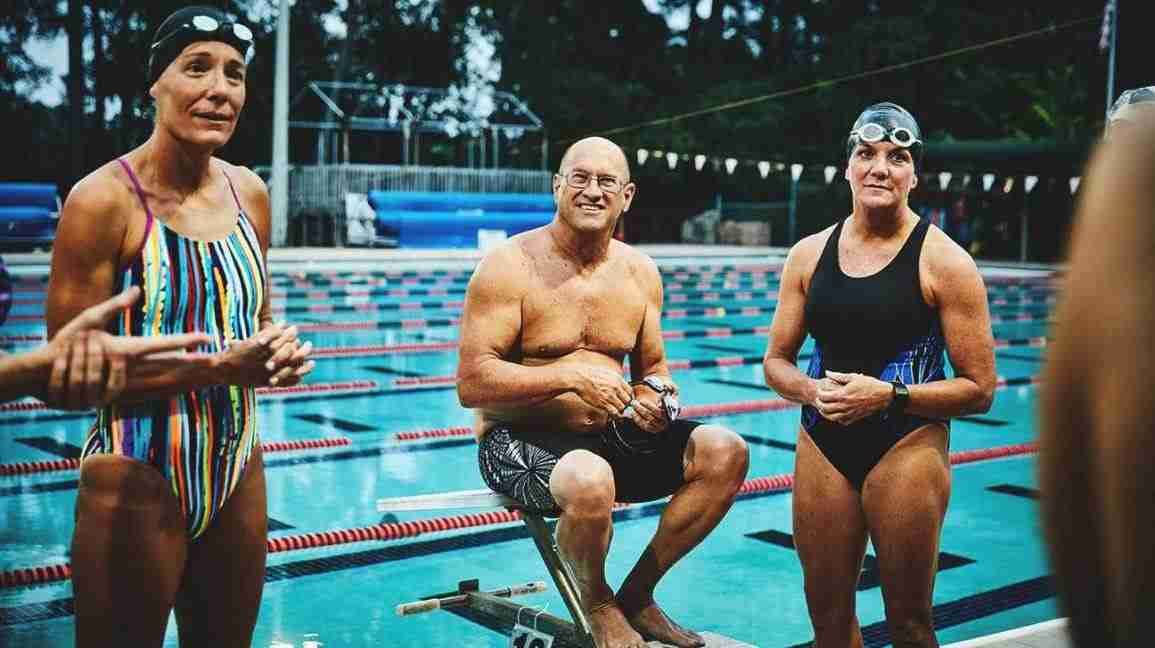Resistance training can help keep aging hearts healthy.

For people entering their senior years, staying physically active is key to staying healthy. But it can be difficult to determine which type of workout is best for aging bodies.
Now, two recent studies take a look at what impact endurance training (including aerobic exercises like biking and running) and resistance training (such as weightlifting and muscle-strengthening exercises) may have on your health as you get older.
Is one method more beneficial than the other?
The studies suggest that both forms of exercise carry out different, crucial functions and that practicing a combination of the two might be the best for keeping you healthier longer as you age.
One of the studies looked at the impact of weightlifting on heart health. The study, published recently in the journal Medicine and Science in Sports and Exercise, found that if you lift weights for less than an hour each week, you might reduce your risk for a heart or stroke by 40 to as high as 70 percent.
The researchers looked at the data of 12,591 adults from the Aerobics Center Longitudinal Study who received at least two clinical exams from 1987 to 2006. These people were measured for cardiovascular events like heart attacks and stroke that did not result in death, events that did result in death, and any type of death. An adherence to resistance training seemed to reduce the risk for all three categories.
Lead researcher Duck-chul Lee, PhD, associate professor of kinesiology at Iowa State University, said he was most surprised that practicing just less than one hour per week of resistance exercise was enough to reduce cardiovascular disease risk.
Lee acknowledges that there are some barriers to making this kind of training a key part of people’s lifestyles. For instance, not everyone has weights at their home or might feel comfortable joining a gym. Similarly, a gym membership might be too costly for some people. He said there are some ways to work around these roadblocks.
“Resistance exercise using body weight such as push-ups and sit-ups is another way,” Lee told Healthcare Website. “However, getting a gym membership would be an effective way to do resistance exercise with more choices of different types of exercise.”
For older adults, Lee said that the benefits of weight lifting and muscle strengthening can extend beyond those tied to cardiovascular health.
“Resistance exercise is specifically important for older adults not only for their cardiovascular health, but also for their bone health, physical function, independence, and quality of life,” he added.
Another study was published last month in the European Heart Journal. This one found that it was endurance training, but not resistance training, that looked to have the most positive effects on slowing — and even potentially reversing — cellular aging.
The research team out of Germany looked at 266 young, healthy, but inactive patient volunteers. Over the course of six months, the participants were broken up into different, randomized group, each one made to carry out either:
- endurance training (in the form of continuous running exercises)
- high-intensity interval training (a warm-up followed by four spurts of high-intensity running alternating with slower running, ending in a final cooldown run)
- resistance training
For resistance training, the participants carried out circuit training on eight different machines, requiring them to do back extensions, crunches, pulldowns, seated rowing, seated leg curls and extensions, seated chest presses, as well as lying-leg presses. A control group did not add any exercise to their day-to-day routine.
The groups that took on new exercise regimens had to do three 45-minute sessions every week. While other studies focus on the external, these researchers looked at the cellular level. They analyzed the length and activity of the participants’ telomeres — the repeating DNA sequence found at the end of each chromosome in a cell — in their white blood cells. Blood was drawn at the start of the study, two to seven days after the final round of each exercise six months later.
Telomeres are important because they protect the ends of a chromosome from deteriorating. As a person ages, their telomeres shorten in length, a marker for a cell’s aging process. The enzyme telomerase works to fight against this shortening process, and when activated, can actually lengthen telomeres. By the end of the study, telomere length increased substantially and telomerase activity increased two to three times more in those who took on endurance and high-intensity training versus resistance exercises.
The full reason why resistance training might have a more pronounced impact on possibly curbing and reversing cellular aging compared to other kinds of exercise is difficult to pinpoint in a clinical study like this, said lead researcher Dr. Christian Werner, senior consultant for cardiology at the University Clinic of the Saarland in Homburg, Germany.
He said one key difference might rest in hemodynamics, or the flow of blood within the body’s tissues and organs.
Werner said that endurance training and not resistance training can affect blood vessel function in a way that activates a vital molecule called nitric oxide. This molecule can help protect the vascular system, which can regulate the telomeres.
“There are other possible mechanisms, which we hope will be unveiled by future studies,” Werner said.
What does this mean for people who focus mainly on strength training? Should they incorporate more running or cycling into their fitness routines?
“The findings of our study clearly point to the importance of endurance training for effects on specific regulators of cardiovascular aging, whereas no effects were seen in the inactive control group or the resistance training group of the study,” he said. “However, the study results absolutely do not discard resistance training as ‘futile.’ The increase in the mean increase in maximum oxygen uptake as a global indicator of ‘fitness’ and a prognostic cardiovascular marker was comparable in all exercise groups.”
Werner said an exercise regimen with both types of workouts could be beneficial.
“With respect to cardiovascular prevention with a focus on healthy aging, we would recommend — according to current guidelines — an endurance-based training protocol that involves strength elements,” he explained.
So, what does it mean if you look at these studies together? In short, exercise more.
Dr. Daniel Vigil, a sports medicine doctor who is a health science associate clinical professor of family medicine at University of California, Los Angeles, said that if you look at the titles of the two new studies, they might appear contradictory. He said it is incorrect to look at them this way — the two studies are assessing “different important questions.”
“One is ‘how can we explore ways to keep our bodies from aging?’ while the other one is ‘I don’t want to have a heart attack, the number one cause of death, I don’t want cardiovascular disease. What can I do to decrease my risk for that?’ ” Vigil told Healthcare Website. “Both are pretty important, relevant, and meaningful and should be on the minds of people who want to lead long, happy lives.”
Vigil said that it can sometimes be confusing for the average person to read, sometimes misleading articles in news publications seem to pit endurance and resistance training against one another. He said both are complementary.
“Resistance activity plus endurance activity is good for your physical health and psychological well-being,” he stressed.
The
So, do the majority of Americans follow these minimum guidelines? The answer is a decided “no.” The U.S. Department of Health and Human Services reports that less than 5 percent of adults participate in 30 minutes of physical activity each day, and only 1 in 3 receive the recommended amount of physical activity each week.
Vigil said that when working with his own patients, he looks at three categories of exercise: strength, endurance and balance or stability on one’s feet.
He said that for older adults who are starting to feel the wear and tear of aging, there are easy ways to incorporate all of these activities into your life. An endurance activity could be taking a walk outside or going for a light jog on your treadmill.
Strength exercises could be lifting weights, but for those who find that intimidating, it could involve simple push-ups, knee bends, or squats to “keep the core body strength as high as possible.” Vigil added that balance plays a big role in both of these — if you aren’t stable on your feet, you could easily fall over or break a wrist during exercise.
“There are all sorts of approaches to improving balance. For instance, tai chi is a pretty popular activity that a lot of people are familiar with, it addresses balance, is pretty calming psychologically,” he said.
For those looking for ways to embrace resistance exercises, Vigil said push-ups are easy at-home exercises that most anyone can do. If you don’t have enough upper body strength to do a full push-up, he suggested there are ways to adjust the way you hold yourself up, bending your knees to a surface at an angle and pushing up that way.
For people who have limited mobility or might be living with obesity, for instance, just getting up and out the door a little bit each day goes a long way.
“Literally getting out the front door can yield health benefits. There is sadly a growing epidemic in this country of obesity and inactivity. For people who are 30, 40, 200 pounds overweight, I suggest they get out of the house and take a walk to the sidewalk or the mail box. I’ve literally given that advice to patients as a genuine exercise prescription. I tell them to do that once or twice a day for four or five times a week and then, as time goes on, advance their program to include longer walks or brisk walks around a park. It will burn calories and make you move around more,” Vigil said.
A study published last week in the European Heart Journal found that endurance training, not resistance training, looked to have the most positive effects on slowing — and even potentially reversing — cellular aging.
Another study, published recently in the journal Medicine and Science in Sports and Exercise, found that if you lift weights for less than an hour each week, you might reduce your risk for a heart or stroke by 40 to as high as 70 percent.
At the end of the day, creating a regimen that includes a diverse combination of activities will be the best for you as you get older, Vigil added.
“A diversity of exercise in moderation on an ongoing steady, frequent basis is the key to maintaining one’s health and longevity, and the two new studies that are out certainly support that statement,” he said.
